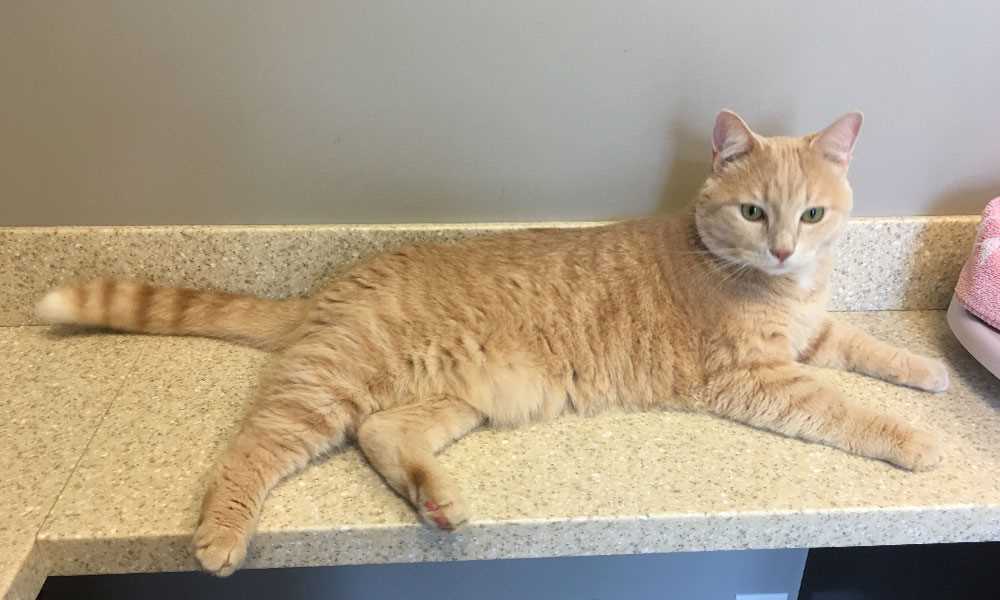My friends, this medication is recommended in situations where pain management is crucial. Whether it’s post-surgery recovery or addressing chronic conditions, the right dosage can significantly enhance comfort. Typically, veterinarians suggest administering it a few hours prior to any stressful event, such as vet visits or travel. This timing allows the medication to take effect, helping to ease anxiety.
In cases of neuropathic pain, your vet may prescribe this treatment to assist with ongoing discomfort. It’s essential to follow the veterinarian’s guidance regarding the amount and frequency, as individual needs can differ widely. Monitoring your feline companion’s response is vital; any signs of adverse reactions should be communicated to the vet immediately.
For those moments of distress, such as after a dental procedure or during recovery from an injury, this medication can provide much-needed relief. Always consult with a veterinary professional to determine the best approach tailored to your furry friend’s unique situation.
When to Use Gabapentin for Felines

For anxiety during vet visits, administering this medication about 1-2 hours beforehand can significantly help in calming nerves. If an upcoming procedure is anticipated, starting a few days prior may also be beneficial for those particularly sensitive to stress.
Pain Management Scenarios

In cases of post-surgical discomfort or chronic pain, the dosage might be adjusted according to the severity of symptoms. Regular monitoring of behavior and response to treatment should guide any necessary changes. Always consult with a veterinarian for tailored advice.
Seizure Control

For those experiencing seizure disorders, this medication can be part of a broader treatment plan. Timely administration according to a veterinarian’s prescription schedule is crucial for its effectiveness.
Identifying Pain Symptoms in Cats

Recognizing discomfort in felines is crucial for their well-being. Here are specific signs to observe:
- Changes in behavior: Withdrawal from interaction or hiding more than usual.
- Altered grooming habits: Over-grooming or neglecting to groom can indicate distress.
- Vocalization: Unusual meowing, growling, or hissing may signal discomfort.
- Appetite changes: Eating less or refusing food might suggest something is wrong.
- Difficulty with movement: Struggling to jump, walk, or sit comfortably may indicate pain.
Physical Signs of Pain
In addition to behavioral changes, look for these physical indicators:
- Shifting weight: Favoring one side while standing or lying down.
- Excessive panting or rapid breathing: This can be a sign of stress or pain.
- Facial expressions: A tense or grimacing face can hint at discomfort.
- Tail position: A lowered or tucked tail can signify unease.
Monitoring Recovery
Post-surgery or after an injury, keep a close eye on recovery signs:
- Watch for any signs of swelling or redness at the surgical site.
- Monitor mobility: Ensure your feline can move around without excessive struggle.
- Behavioral changes: Look out for any resurgence of discomfort or changes in mood.
Being vigilant about these symptoms ensures timely intervention and a quicker return to normalcy for your furry companion.
Understanding Gabapentin’s Role in Feline Pain Management
As an 8-year-old Scottish Fold, I’ve experienced my fair share of discomfort, and I can tell you that certain medications play a significant role in alleviating pain. This particular medication is often employed in managing chronic pain conditions, such as arthritis or neuropathic pain. It serves to reduce both the perception of pain and the emotional response to it, making it a valuable part of a broader pain management strategy.
Mechanism of Action
This medication works by inhibiting excitatory neurotransmitters in the brain, thus preventing pain signals from being transmitted. Its ability to calm the nervous system can assist in providing relief during stressful situations, such as vet visits or after surgical procedures. The dosage varies, typically calculated based on body weight and specific pain conditions, ensuring that each feline receives the appropriate level of support.
Potential Side Effects
While the benefits are substantial, it’s crucial to monitor for any adverse reactions. Drowsiness, unsteadiness, or digestive upset can occur, so it’s wise to keep an eye on how I respond after starting any new treatment. Always consult with a vet to adjust dosages or explore alternative options if necessary. Speaking of alternatives, if you’re looking for something interesting to try in the kitchen, I recently found a great guide on how to cook pumpkin seeds on skillet that might pique your interest!
Dosage Guidelines for Gabapentin in Cats
The typical dosage ranges from 5 to 10 mg per kilogram of weight, administered every 8 to 12 hours. For my fellow felines, this often means around one capsule or tablet for an average-sized cat weighing about 4 to 5 kg.
Always initiate treatment at the lower end of the scale, particularly for those new to this medication. If the desired effect isn’t achieved, incrementally adjust the dosage under veterinary supervision.
For managing anxiety related to veterinary visits, a single dose about an hour before the appointment works well. If pain relief is needed post-surgery or during recovery from injury, continuous administration may be required, monitored by a vet to fine-tune the amount based on individual response.
Never exceed 20 mg/kg, as higher doses can lead to side effects such as sedation or gastrointestinal upset. Always consult a veterinarian when considering any adjustments to ensure safety and efficacy.
Monitoring behavior and overall health is crucial during treatment. If any unusual signs appear, such as excessive lethargy or changes in appetite, reach out to a vet immediately.
Timing of Administration for Optimal Results
Administering this medication effectively is key to managing discomfort. The optimal time to provide it is typically 1 to 2 hours prior to a known stressful event, such as a vet visit or grooming session. This allows the medication sufficient time to take effect, easing anxiety and pain.
Daily Management
For ongoing pain management, scheduling doses around the same time each day helps maintain consistent levels in the bloodstream. Here are some tips:
- Set a routine: Morning and evening doses work well for daily administration.
- Avoid skipping doses: Consistency is crucial for pain control.
- Adjust timing based on activity: If certain activities trigger discomfort, time the dose accordingly.
Observational Cues
Watching for signs of discomfort can help in timing administration. If I seem more withdrawn or reluctant to jump, it may be time to consider an earlier dose. Always consult with a veterinarian if adjustments are needed.
Monitoring Side Effects After Gabapentin Administration
It’s crucial to observe any changes in behavior or health post-administration of this medication. Common side effects include sedation and ataxia. Keep an eye on how I move and interact with my environment. If I seem unusually wobbly or lethargic, it might be a cause for concern.
Signs to Watch For
| Side Effect | What to Observe |
|---|---|
| Increased Sedation | Difficulty waking up, excessive sleeping |
| Ataxia | Unsteady gait, stumbling |
| Gastrointestinal Issues | Vomiting, diarrhea, loss of appetite |
| Behavioral Changes | Increased aggression, withdrawal, unusual vocalizations |
If any of these symptoms are noticed, a consultation with a veterinarian is advisable. Adjustments in dosage or medication might be necessary. Additionally, maintaining a comfortable environment, such as using a best heated pad for cats, can help in managing pain and promoting relaxation during recovery.
Consulting Your Veterinarian Before Treatment
Before any medication is introduced to my routine, the first step is consulting with my veterinarian. They are the ones who can assess my health status, review my medical history, and consider any potential interactions with other treatments I might be undergoing.
It’s crucial to discuss specific pain symptoms I may be exhibiting. My vet will evaluate whether the prescribed remedy is appropriate based on my unique situation. They will also take into account my age, weight, and any pre-existing conditions that could affect treatment choices.
In addition, it’s wise to inquire about alternative pain management options. Sometimes, there might be other therapies or medications that could be more suitable for me. Understanding the intended effects and possible risks is also essential, so asking questions is strongly encouraged.
Regular follow-ups are part of the process. Keeping my vet informed about how I respond to any new treatment allows for timely adjustments, ensuring I receive the best possible care tailored to my needs.







